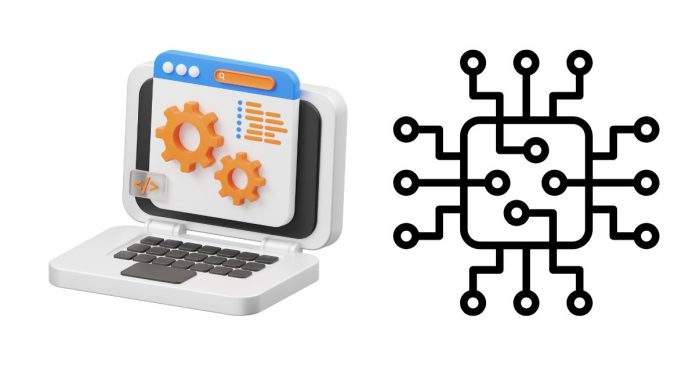The terms hardware and software are fundamental to understanding how computers and other electronic devices operate. Although they work together to perform tasks, they represent two distinct aspects of computing systems.
1. Definition
- Hardware: Hardware refers to the physical components of a computer or any electronic device. It includes all the tangible, mechanical, and electrical parts that make up the system. Examples of hardware include the CPU, hard drive, memory (RAM), motherboard, keyboard, mouse, monitor, and printers.
- Software: Software refers to the programs, applications, and operating systems that instruct the hardware on how to perform tasks. It is intangible and consists of sets of instructions that tell the hardware what to do. Examples of software include operating systems (like Windows, macOS), applications (like Word processors, web browsers), and utility programs (like antivirus software).
2. Characteristics
- Hardware:
- Tangible: You can physically touch and see hardware components.
- Permanent: Once installed, hardware typically stays in place unless physically replaced.
- Performs tasks: Hardware executes the instructions given by the software.
- Software:
- Intangible: Software cannot be physically touched, as it exists in the form of code.
- Modifiable: Software can be updated, changed, or modified through patches, upgrades, or new versions.
- Provides functionality: Software enables the hardware to perform specific tasks by providing instructions or programs.
3. Types
- Hardware:
- Input Devices: Devices that send data to the computer (e.g., keyboard, mouse).
- Output Devices: Devices that display or produce the result of computations (e.g., monitor, printer).
- Storage Devices: Devices that store data for future use (e.g., hard drives, SSDs).
- Processing Units: Components like the CPU or GPU, which process data and execute instructions.
- Software:
- System Software: This includes operating systems (like Windows, Linux), which manage hardware resources and provide a platform for other software to run.
- Application Software: These are programs that help users perform specific tasks, such as word processing (Microsoft Word), web browsing (Google Chrome), or video editing (Adobe Premiere).
- Utility Software: Programs designed to maintain or optimize computer performance (e.g., antivirus programs, file management tools).
4. Interdependence
- Hardware-Software Interaction: Hardware and software are interdependent. Hardware needs software to function, as software provides the instructions for hardware to process data. In turn, software requires hardware to execute tasks, as it runs on the hardware infrastructure.
- Example: A printer (hardware) needs printer driver software to communicate with the computer, and the computer uses the software to send print jobs to the printer.
5. Examples
- Hardware Examples:
- Central Processing Unit (CPU)
- Motherboard
- RAM (Random Access Memory)
- Hard Drive / SSD
- Keyboard, Mouse, Monitor
- Software Examples:
- Microsoft Windows (Operating System)
- Google Chrome (Web Browser)
- Photoshop (Image Editing Software)
- Excel (Spreadsheet Software)
- Java (Programming Language)
6. Cost and Lifespan
- Hardware:
- Hardware typically requires a higher initial cost for purchasing and installation. It can have a long lifespan, but eventually, it may need replacement due to wear and tear or obsolescence.
- Software:
- Software usually involves an upfront cost for purchasing (or sometimes it’s free) but may require ongoing costs for updates, licenses, or subscriptions. Software can be easily updated or upgraded without affecting physical components.
7. Examples of Interaction
- A smartphone:
- Hardware: The screen, camera, battery, and processor.
- Software: The operating system (iOS or Android), mobile apps like Instagram, and any other application that runs on the phone.
- A Laptop:
- Hardware: Keyboard, CPU, display, and battery.
- Software: The operating system (like Windows or macOS) and programs like Microsoft Office or web browsers.
8. Key Differences
| Aspect | Hardware | Software |
|---|---|---|
| Nature | Physical and tangible | Intangible, exists as code |
| Function | Performs physical tasks and operations | Provides instructions for hardware tasks |
| Examples | CPU, RAM, Keyboard, Mouse | Windows OS, Microsoft Word, Google Chrome |
| Modifiability | Cannot be easily modified once created | Can be easily updated or changed |
| Cost | Higher initial cost, fixed hardware | Often cheaper, with licensing or subscription costs |
| Lifespan | Longer lifespan but may become obsolete | Shorter lifespan, requires updates |
Conclusion
- Hardware is the physical machinery that makes computing possible, while Software provides the instructions and functionality needed to make hardware perform meaningful tasks.
- Both are essential for a computer or any electronic system to work properly, and they are often considered two sides of the same coin, working together to deliver a seamless user experience.


